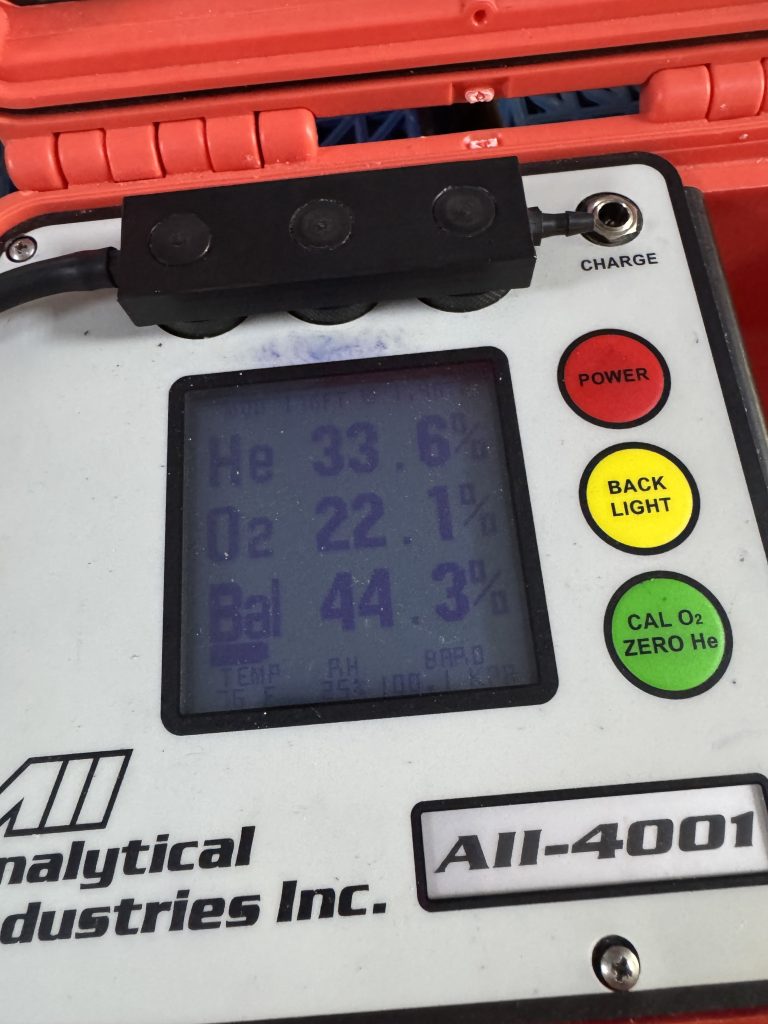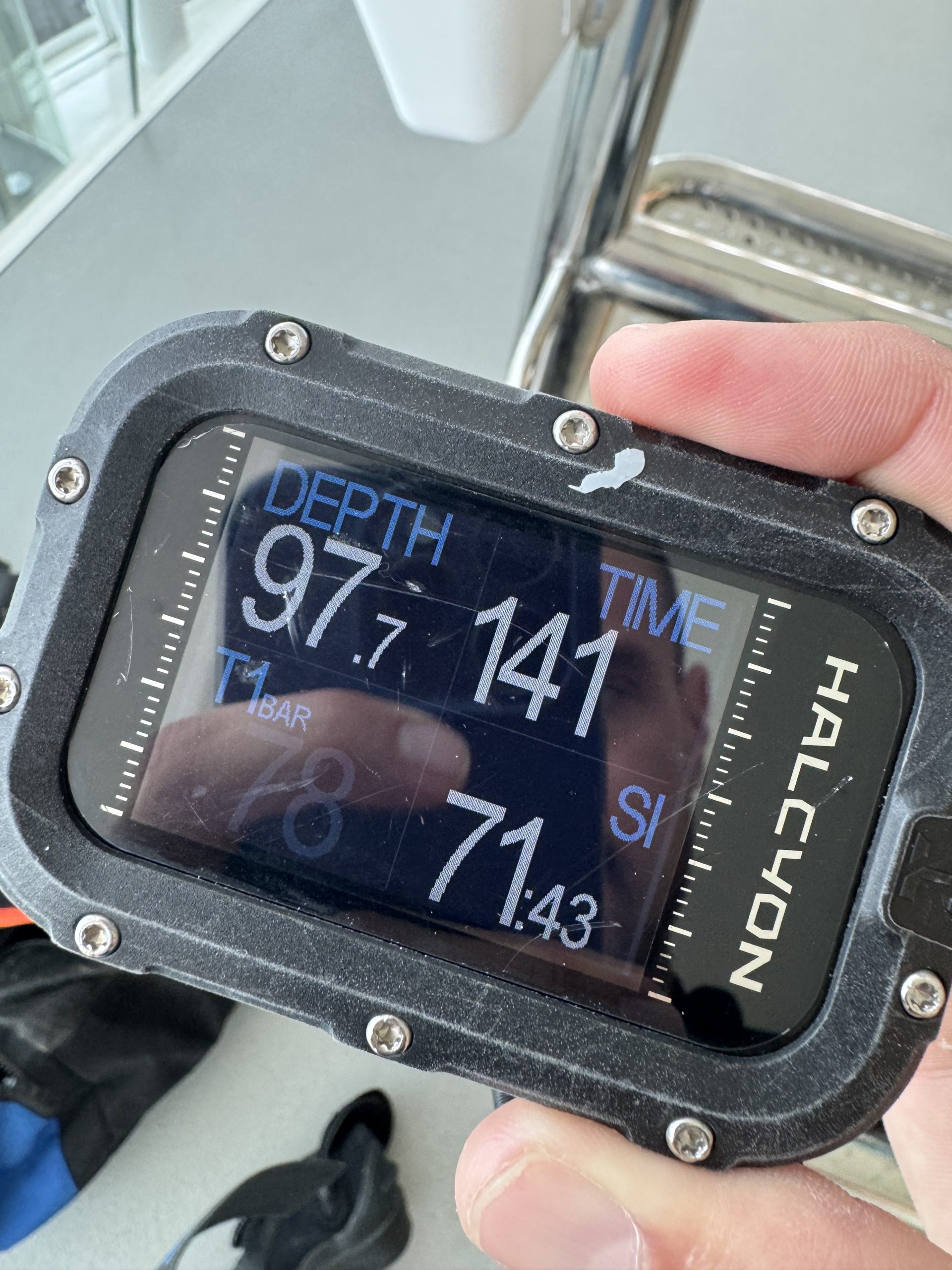After finishing my Open Water course, I knew right away what I wanted next — the Nitrox course.
During all our Open Water dives at Deep Dive Dubai, we had already been using Nitrox 32%, since that’s their standard policy. But I was worried that if I started diving elsewhere, I’d have to switch back to regular air, and somehow that didn’t sit right with me. I had read that diving with Nitrox could help reduce post-dive fatigue, and since my buoyancy control still wasn’t great at the time — which meant a lot of swimming and extra effort — the idea of feeling less tired sounded very appealing.
So, I decided to take the PADI Enriched Air (Nitrox) course immediately after my Open Water certification, again with Ericson as my instructor. The course itself was simple and straightforward — a few hours of theory, learning how to analyze the oxygen percentage in your tank, and understanding how to set your dive computer accordingly. We did one or two dives (I honestly don’t remember exactly how many), and by the end of the day, I had my Nitrox certification in hand.
Looking back now, I’d still recommend this course to every new diver as soon as possible — but not for the reasons I originally thought.
It’s not about whether you feel more or less tired; that’s subjective and depends on your fitness, buoyancy, and workload during a dive.
The real benefit of Nitrox is reduced nitrogen absorption. By breathing a higher percentage of oxygen, you lower the amount of inert gas your body absorbs, which means a lower risk of decompression sickness and often longer no-decompression limits (NDL) — especially useful on dives between 24 and 30 meters.
| Depth | NDL on Air | NDL on Nitrox 32% | Difference |
|---|---|---|---|
| 24 m / 80 ft | 29 minutes | 40 minutes | +11 min |
| 27 m / 90 ft | 23 minutes | 30 minutes | +7 min |
| 30 m / 100 ft | 20 minutes | 25 minutes | +5 min |
These differences might not look dramatic on paper, but underwater they matter — especially during multi-dive days, photography dives, or when you want more time to explore a wreck without pushing the limits of your computer. Over multiple dives, Nitrox helps reduce your overall nitrogen exposure, which directly contributes to safer profiles and shorter surface intervals.
Quick Facts About Nitrox 32% (EAN32)
Typical mix: 32% oxygen / 68% nitrogen (commonly called EAN32)
Maximum Operating Depth (MOD):
At PPO₂ = 1.4 → 33 meters / 110 feet (recommended working limit)
At PPO₂ = 1.6 → 40 meters / 132 feet (absolute contingency limit, not for planned dives)
Recommended maximum PPO₂: 1.4 bar for the working portion of the dive
Absolute maximum PPO₂: 1.6 bar, used only for short decompression stops

Key safety habits:
Always analyze and label your cylinder before diving
Record your mix and MOD in your dive log
Set your dive computer to the correct oxygen fraction (FO₂) before the dive
Using Nitrox safely requires understanding these limits — particularly how oxygen exposure increases with depth. As a diver, your goal isn’t to dive as deep as possible with Nitrox, but to use it to stay safer and extend bottom time within recreational limits.
There’s also some talk about Nitrox reducing narcosis, though that’s still debated. What’s clear is that Nitrox gives you a safer and slightly more flexible dive profile, especially if you’re doing multiple dives in a day.
The key takeaways from the course were simple but essential:
Always analyze your tank before diving and label it clearly.
Know your maximum operating depth (MOD) for your mix — and never exceed it.
In most recreational centers I’ve visited so far, 32% oxygen remains the standard Nitrox blend, offering a good balance between safety and flexibility.
For me, the Nitrox course was my first real step toward understanding gases, limits, and how much control a diver can have over their safety.
It might seem like a small certification, but it sets the mindset for technical awareness — something every diver benefits from as they progress.



